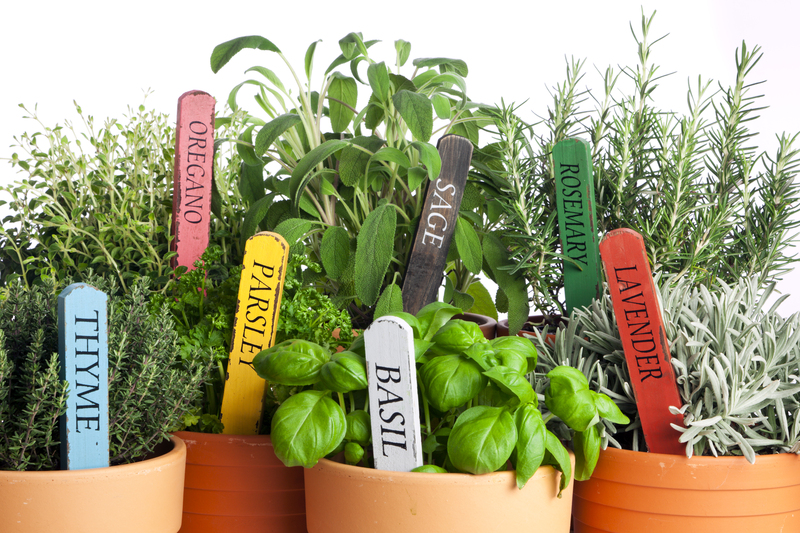Safe Chemical Alternatives to Remove Annoying Stumps
Are unwanted tree stumps detracting from your property's beauty or safety? Traditionally, stump removal involves burning, heavy machinery, or harsh chemicals. However, these solutions aren't always safe for your family, pets, or the environment. In this comprehensive guide, we'll explore safe chemical alternatives to remove annoying stumps, focusing on eco-friendly and effective methods to reclaim your landscape.
Why Choose Safe Chemical Alternatives for Stump Removal?
Before exploring alternatives, it's important to understand why you should opt for safe stump removal chemicals over traditional harsh options:
- Environmental Protection: Harsh chemicals can leach into soil and water, harming plants, wildlife, and even humans.
- Pet and Child Safety: Many commercial stump removal chemicals are toxic to pets and children who may play near treated areas.
- Sustainable Landscaping: Eco-friendly alternatives preserve soil health, encouraging regrowth of grass and beneficial organisms.
- Cost-Effectiveness: Non-toxic stump removal solutions are often more affordable and just as effective.
Common Issues With Traditional Stump Removal Chemicals
Many conventional stump removers contain potassium nitrate or glyphosate, both of which accelerate decomposition but may have serious environmental impacts. Potassium nitrate, for instance, can alter soil chemistry and pollute groundwater. Glyphosate, an herbicide, is linked to health risks and is under scrutiny worldwide. That's why considering natural stump removal methods and less harmful chemicals is crucial.

Non-Toxic and Safe Chemical Alternatives: Eco-Friendly Stump Removal
The following safe chemical alternatives quickly and effectively break down stumps without harming your yard or the ecosystem.
1. Epsom Salt (Magnesium Sulfate): An All-Natural Remedy
Epsom salt is a gardener's friend, useful for plant health and now, for stump decomposition. Magnesium sulfate draws moisture from wood, speeding up decay.
How to Use Epsom Salt for Stump Removal:- Drill 8- to 12-inch-deep holes across the top of the stump, about an inch apart.
- Fill each hole with Epsom salt, then add water to dissolve the crystals.
- Cover the stump with a tarp or plastic sheeting to keep out rain and light.
- Reapply every few weeks until the stump softens enough to be broken apart or removed.
This method is safe for children and pets and does not introduce harmful residues to your soil.
2. Rock Salt: Accelerate Stump Decay the Natural Way
Rock salt (sodium chloride) is a potent yet safe ingredient for hastening stump decomposition. Salt dehydrates the wood, impeding growth and inviting decay fungi.
Steps for Using Rock Salt:- Drill holes into the stump as described for Epsom salt.
- Fill holes with rock salt granules.
- Moisten the salt and stump surface to aid penetration.
- Cover with soil or mulch and reapply monthly.
Note: Avoid overusing salt, as excessive sodium can harm nearby plants. This approach is ideal for stumps distant from valued shrubs and trees.
3. Enzyme-Based Stump Removers
Commercially available enzyme-based stump removers offer a green, pet-safe chemical alternative. These products rely on natural fungi and bacterial enzymes to digest lignin and cellulose, breaking down tough wood fibers efficiently.
Advantages of Enzyme-Based Stump Removers:- Non-toxic and biodegradable
- No harmful residues
- Suitable for use near gardens and play areas
- Speeds up natural breakdown of wood
Popular choices include:
- Spectracide Stump Remover (enzyme formula)
- Bio-Advanced Natural Stump Remover
4. Homemade Natural Stump Remover Mixes
DIY stump removal solutions can be crafted with household ingredients, maximizing safety and minimizing cost. Try mixing vinegar and lemon juice as natural desiccants, or add high-nitrogen organic fertilizer (like blood meal) to accelerate microbial decomposition.
Homemade Vinegar-Based Stump Remover Recipe:- Mix 2 parts white vinegar with 1 part lemon juice.
- Drill holes and pour the solution directly into the stump.
- Repeat weekly until significant softening is observed, then break up or dig out the stump.
For best results, combine natural stump decayers with physical removal techniques (like chipping or digging) after a few weeks of treatment.
5. Bacterial and Fungal Inoculants
Bacterial and fungal inoculants are specialized products that introduce wood-decaying species (e.g., Trametes versicolor, also known as turkey tail fungus) into the root system. These organisms naturally break down cellulose and lignin.
How to Apply Inoculants:- Wound the stump (create slits or holes).
- Apply the spore or bacterial powder as directed.
- Maintain soil moisture and cover the area to encourage growth.
Benefits: No chemicals, naturally enhances soil fertility, and completely safe for wildlife.
Safe Stump Removal: Tips and Tricks
Choosing the right eco-friendly stump removal alternative is just the first step. Here are additional tips to maximize safety and effectiveness:
Preparation is Key
- Trim the stump as low to the ground as possible using a chainsaw or handsaw (always wear safety gear!).
- Drill multiple deep holes close together to allow chemicals to penetrate deep into the wood.
Patience Pays Off
Natural solutions are safe but often slower than harsh chemicals. Full decay can take three months to a year, depending on size and tree species.
Combine Methods
- Use safe chemicals in conjunction with mulching, covering, or cutting to accelerate results.
- Once softened, break up the stump with an axe, mattock, or shovel.
Monitor Surroundings
Check for regrowth or sucker shoots and re-treat as necessary. Avoid chemical runoff by not treating before heavy rain.
Frequently Asked Questions About Safe Chemical Stump Removal Alternatives
Are natural stump removers as effective as commercial ones?
Yes! Given time and the right application, methods like Epsom salt and enzyme-based removers can be just as effective as traditional harsh chemicals. The main trade-off is the speed of decay versus sustainability and safety.
How long does safe chemical stump removal take?
Eco-friendly stump rotting can take from a few months up to a year, depending on tree species, stump size, and local climate. Regular reapplication speeds the process.
Can these methods be used in vegetable gardens or near water sources?
Absolutely! Non-toxic alternatives like Epsom salt, vinegar, and enzyme-based removers are safe for proximity to edible gardens and water. Always use sparingly and avoid heavy application to prevent soil imbalance.
Is it safe for pets and children to play near treated stumps?
One of the main advantages of these alternatives is safety. Still, keep kids and pets away from the treated area for a few days after application to ensure all liquid has absorbed or dried.
Environmental Impact: Why Safe Chemical Alternatives Matter
Choosing eco-friendly stump removal methods doesn't just protect your family; it benefits the ecosystem:
- Avoids contaminating groundwater with nitrates or herbicides.
- Preserves beneficial soil bacteria and fungi necessary for healthy plant life.
- Prevents harm to pollinators, pets, and wildlife from toxic residues.
- Promotes sustainable landscaping practices for a greener future.

Best Practices for Safe and Effective Stump Removal
Understand Local Regulations
Some municipalities restrict chemical use or require permits for tree and stump removal. Always check with your local environmental agency for approved methods.
Responsible Disposal
Once your stump is broken down, compost or properly dispose of wood chips and rotted material. Avoid adding large, undecomposed chunks to garden compost if they show signs of disease.
Soil Restoration and Planting
After the stump is gone, use the opportunity to revitalize the area:
- Backfill with fresh topsoil and compost to support new plantings.
- Test soil pH and amend as necessary after using salts or vinegar-based solutions.
- Plant native grasses, trees, or flowers to enhance biodiversity and prevent erosion.
Conclusion: Removing Stubborn Stumps the Safe and Sustainable Way
There's no need to risk your yard's health or your family's safety with harsh, toxic chemicals. By using safe chemical alternatives to remove annoying stumps--such as Epsom salt, rock salt, enzyme-based solutions, and natural inoculants--you embrace a method that prioritizes environmental stewardship and long-term landscape beauty.
Commit to sustainable yard care and say goodbye to those unsightly stumps, all while keeping your outdoor spaces safe and thriving for years to come.
Ready to start?
Choose the eco-friendly method that suits your needs and enjoy a healthier, greener yard. Have questions or experiences with safe stump removal? Share your tips and stories below!